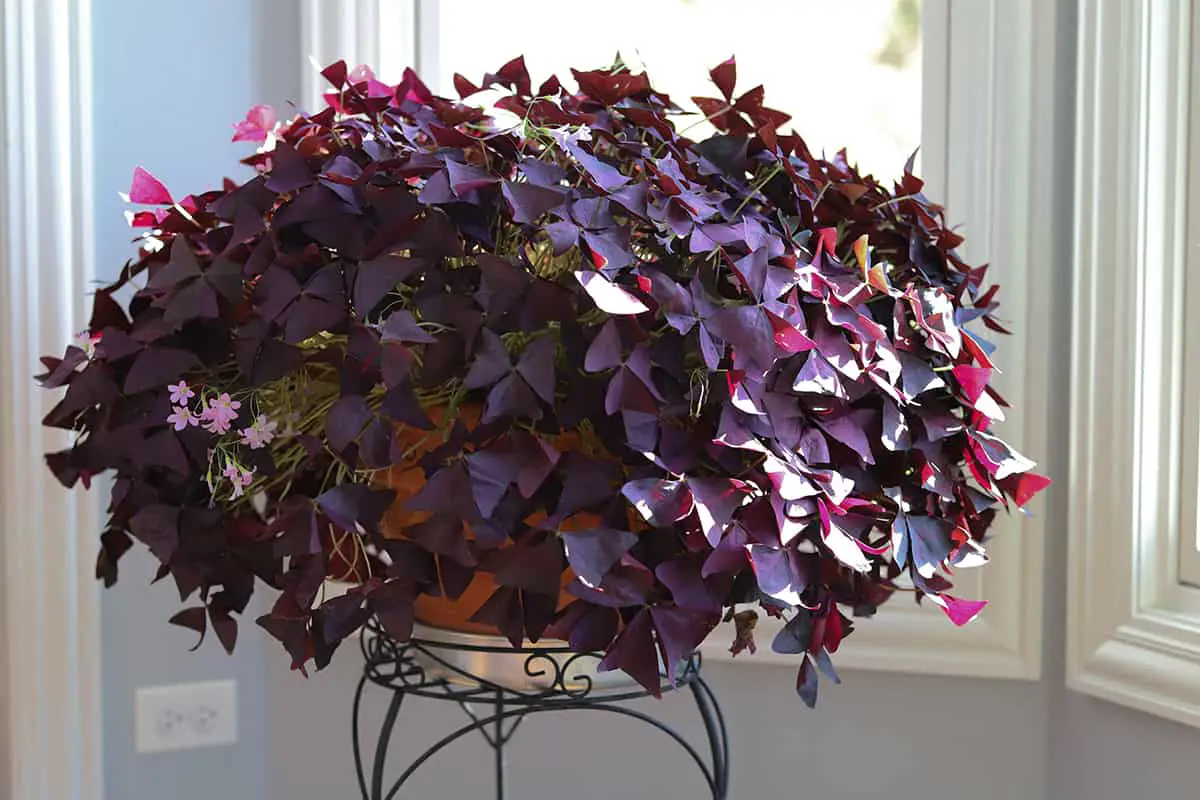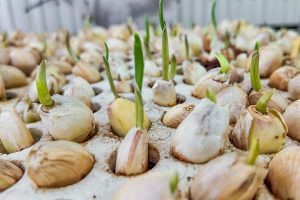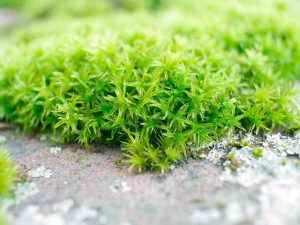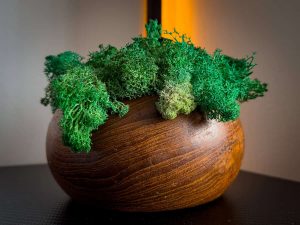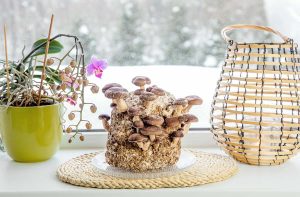When you received an Oxalis plant as a housewarming gift, you were thrilled but a bit anxious about keeping it alive. The plant’s vibrant purple leaves and delicate appearance seemed like they might require complex care. However, you soon discovered that with just a bit of know-how on light, watering, and soil conditions, your Oxalis not only survived but thrived, adding a burst of color to your kitchen or living window. This guide will give everything you need about caring for oxalis plants.
| Common Name | Shamrock Plant, Wood Sorrel |
| Botanical Name | Oxalis triangularis |
| Family | Oxalidaceae |
| History & Origin | Native to South America, popular in Victorian times |
| Plant Type | Perennial, bulb |
| Mature Size | Up to 12 inches tall and wide |
| Sun Exposure | Bright, indirect light preferred |
| Soil Type | Well-draining, loamy |
| Soil pH | Slightly acidic to neutral |
| Temperature | Prefers 60-75°F (16-24°C) |
| Watering | Water moderately, allow soil to dry slightly |
| Fertilizing | Feed lightly during growing season |
| Bloom Time | Late winter to early spring |
| Flower Color | Pink, white, or yellow |
| Hardiness Zone | Zones 8-11 |
| Toxicity | Mildly toxic to pets and humans |
| Common Problems | Overwatering, insufficient light |
Table of Contents
Light
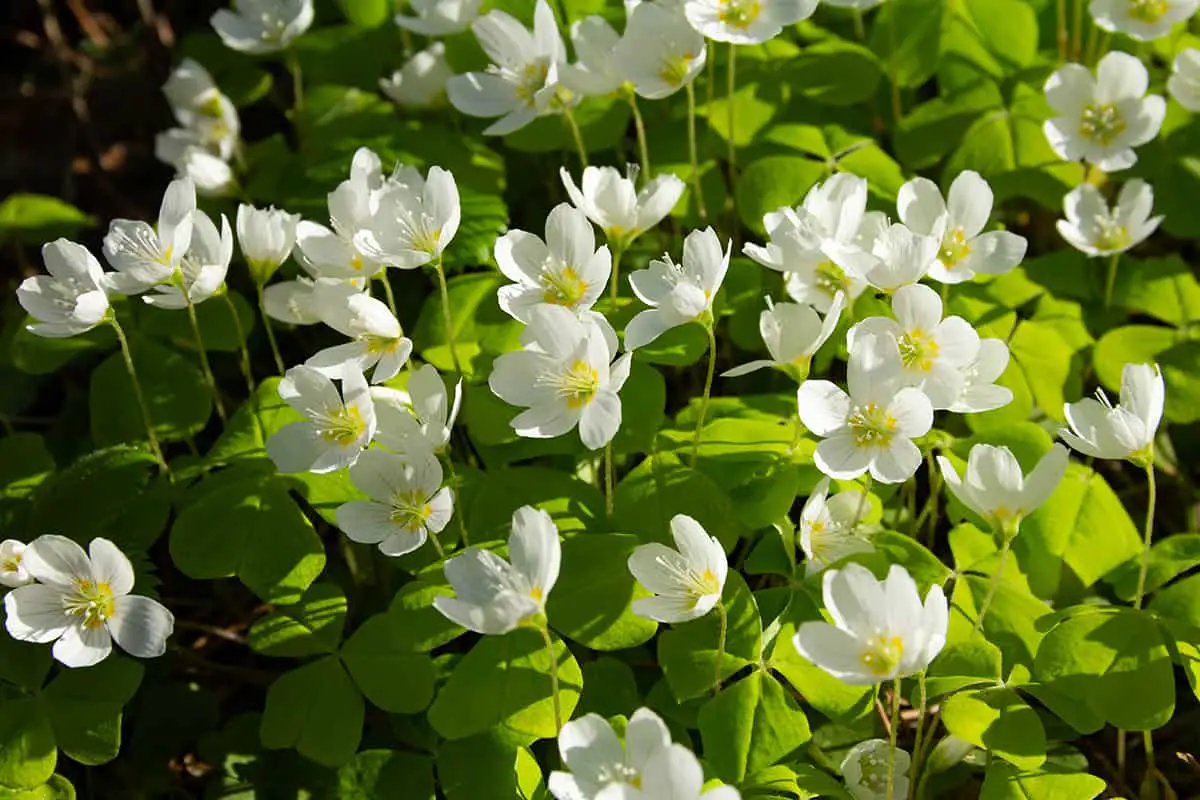
Oxalis plants need bright, indirect sunlight to grow well. Direct sunlight can harm the leaves, causing them to lose color and wilt. Find a spot in your home where the light is dappled, such as near a window with sheer curtains, to provide the ideal light for your plant.
Some Oxalis species can tolerate full sun, especially if they are acclimatized gradually. Six hours of direct sunlight a day works for these types. It’s crucial to observe your plant’s response to light and adjust its location accordingly. Too much direct sun leads to stress, while too little results in leggy stems.
In winter, when light is less intense, you might place Oxalis in a sunnier spot. This adds to their need for cool conditions when flowering. Just be mindful to pull them back from intense light that returns in spring.
Remember, light affects Oxalis germination as well. A light layer of mulch can prevent excess light from reaching the soil, which in turn keeps Oxalis seed germination in check. This is especially useful for outdoor Oxalis control.
Soil
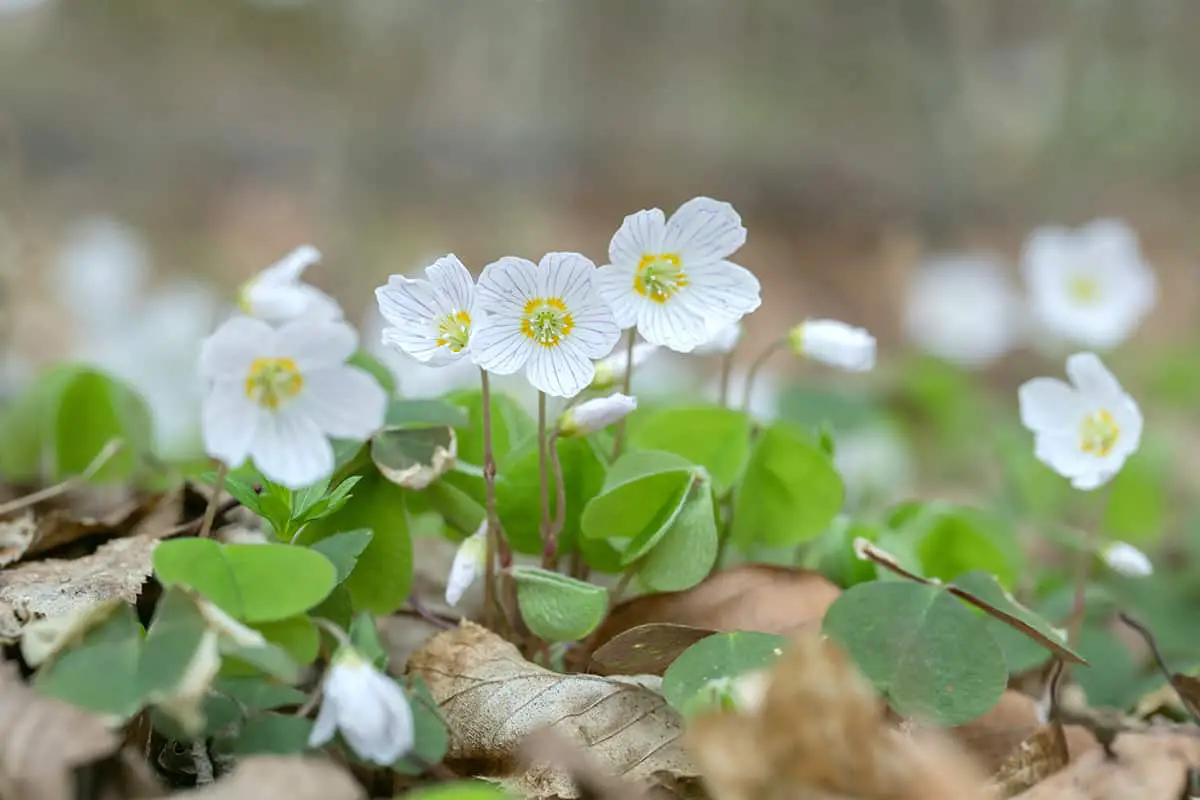
This plant thrives in a variety of soil types, giving you flexibility. For optimal growth, choose well-draining soil. Oxalis can handle different pH levels, ranging from acidic to alkaline conditions.
Your plant will benefit from moist soil but can also tolerate occasionally dry periods. Remember, consistent moisture without waterlogging provides the best environment. If your garden’s soil is heavy clay or too sandy, amend it with compost to improve structure and drainage.
Proper soil preparation helps prevent many issues. Good drainage reduces the risk of root rot, a common problem in soggy soils. If you’re planting Oxalis in containers, use a high-quality potting mix that includes perlite or vermiculite to enhance drainage.
Lastly, while Oxalis can grow in poor soils, providing fertile soil will boost its performance. Regular application of a balanced, slow-release fertilizer mixed into the soil can provide nutrients throughout the growing season.
Water
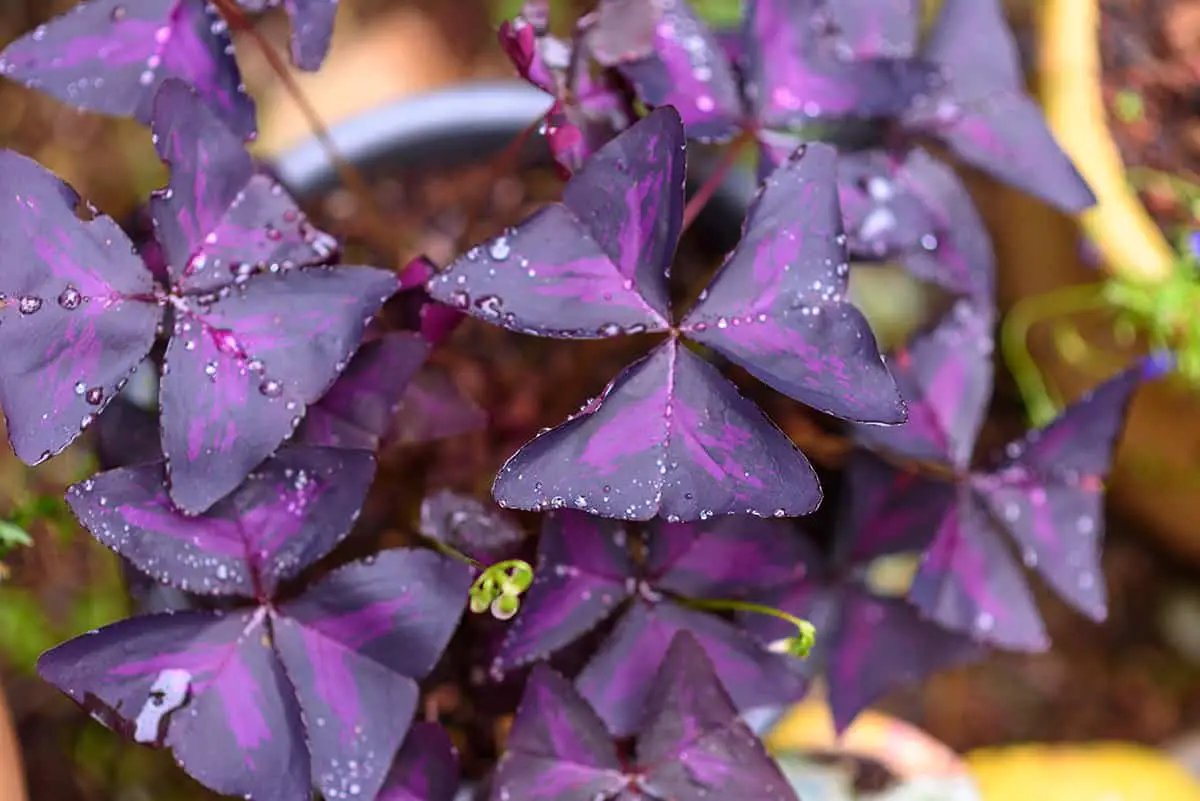
You want to provide enough water to keep the soil moist, but it’s crucial to avoid overwatering. Excess water leads to soggy soil, which can cause root rot—a common issue with this plant.
Start by watering your Oxalis when the top inch of soil begins to dry out. This method helps prevent the soil from becoming too dry or too wet. The frequency of watering will vary depending on factors like temperature and humidity. In general, you may find yourself watering once a week.
During dormant periods, typically in summer for some Oxalis species, water less frequently. The plant’s water needs decrease as it rests. The aim here is to keep the soil slightly damp, ensuring that the bulbs don’t dry out completely.
For indoor potted Oxalis, use pots with drainage holes. This allows any excess water to escape, safeguarding the roots from waterlogging. Remember to empty the saucer under the pot after each watering to keep conditions ideal.
Temperature and Humidity

For optimal growth, maintain indoor temperatures around 60 to 75ºF during the day. At night, a drop of 15 to 25 degrees is beneficial. High temperatures, particularly in late summer, can cause Oxalis to enter a rest period. Leaves may yellow and drop as the plant goes dormant, usually for one to three months.
Humidity levels should resemble those of their native environment, which is generally moderate to high. Nonetheless, it’s essential to keep the soil moist but not wet to prevent root rot. A bright sunny window that doesn’t get too hot is ideal for Oxalis. Protect your shamrocks from extreme temperatures and drafts, which can stress the plant.
During dormancy, reduce watering and keep the plant in a cooler, darker spot. When you notice new growth, this signals the end of dormancy. Gradually reintroduce light and resume regular watering. This careful attention to temperature and humidity mimics the seasonal patterns Oxalis experience in nature, ensuring a robust and lively plant.
Fertilizer
Your Oxalis needs nutrients to thrive, particularly during its growing season in the spring and summer. Use a balanced, water-soluble fertilizer. Apply it about once a month.
Choose a fertilizer with an equal ratio of nitrogen, phosphorous, and potassium. These are often labeled as 10-10-10 or 20-20-20. Apply the fertilizer as directed on the package. Over-fertilization can harm your plant.
During the plant’s dormancy in the fall and winter, you should stop fertilizing. Your Oxalis will rest and it won’t need the extra nutrients. Resume feeding the following spring when you see new growth.
Propagation
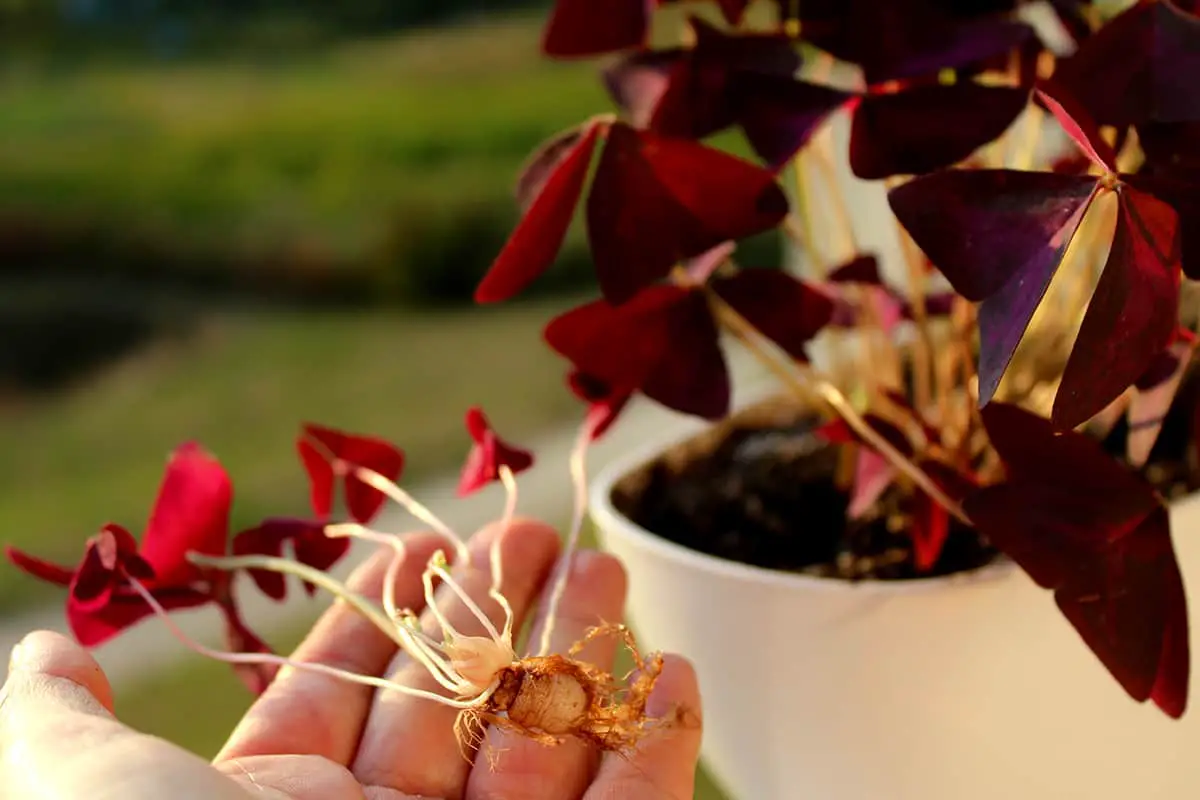
You can use several methods to propagate Oxalis, including division, root cutting, and seeds. Start with division in the spring. This method involves separating the plant’s bulbs, ensuring each section has at least one growth point.
For root cutting, cut a healthy root into sections. Each piece should be a few inches long. Plant them horizontally in the soil. Root cutting suits the start of the growing season.
Seeds present another option. Plant them indoors before the last frost date. Oxalis seeds need light to germinate, so press them into the soil surface rather than covering them. Expect sprouts within several weeks.
Pruning
Pruning your Oxalis plants helps promote healthier growth. You might need to trim back the foliage to encourage a fuller plant. When you notice old flowers fading, cut them off at the stem. This process, called deadheading, encourages new blooms.
Sometimes Oxalis can go dormant, especially if you own a variety such as the Oxalis triangularis. When the leaves start to die back, prune the plant down to the soil level. This may seem drastic, but it helps the plant conserve energy and rebound with vigor in the growing season.
If you encounter any yellow or damaged leaves, remove them promptly. This action prevents potential disease spread and improves air circulation. Use sharp, clean scissors or pruning shears for a precise cut. This precision minimizes stress to your Oxalis.
In all your pruning efforts, be gentle. Harsh cuts or rough handling can harm the delicate stems and roots of the plant. Aim for a natural look, trimming just enough to maintain the desired shape and health of your Oxalis.
Potting and Repotting
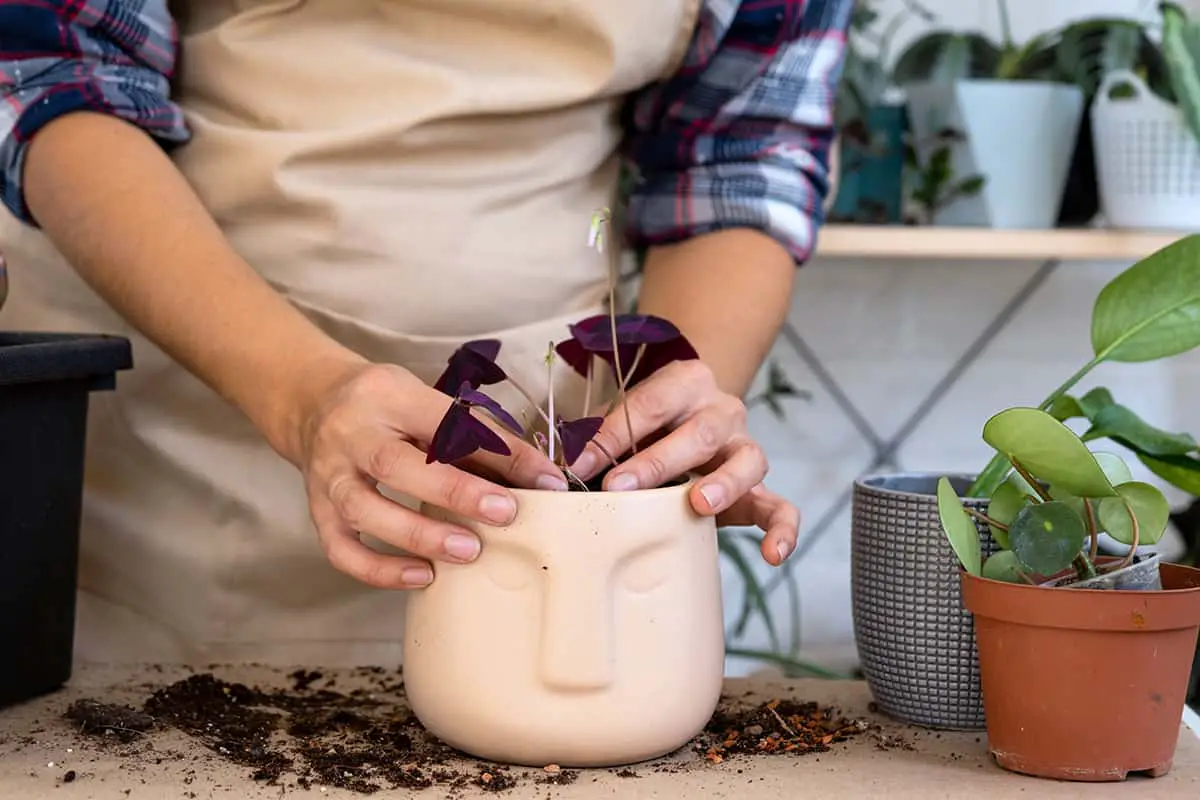
Begin with a pot that is only slightly larger than the plant’s bulb or root mass; Oxalis thrives when slightly pot-bound. Use a well-draining potting mix to promote healthy growth. A mix that includes peat, perlite, and vermiculite offers the drainage Oxalis plants require.
As your plant matures, it may become necessary to move it to a larger pot. You should repot Oxalis every two to three years to refresh the soil. Choose a new pot that is one size bigger than the current one. Doing so prevents excess moisture from accumulating around the roots, which can cause rot. At the same time, avoid a pot that is too large, as this can stifle the blooming process.
During repotting, gently separate the bulbs or tubers, being careful not to damage them. Place the plant at the same depth in the new pot as it was in the original one. After repotting, water your Oxalis sparingly until you see new growth, indicating the plant has settled into its new environment. This ensures a smooth transition for your Oxalis, encouraging it to flourish in its new pot.
Common Problems
When you grow Oxalis, you may encounter some issues. A frequent problem is an infestation by pests like whiteflies and mites. These pests can harm the plant by feeding on its sap, weakening it over time. You need to tackle these invaders quickly to keep your Oxalis healthy.
Oxalis can often manage in poor soil. However, this resilience doesn’t shield it entirely from diseases. Rust fungus, for example, can be problematic, particularly if you also grow corn. This disease thrives in cool, moist conditions and should be controlled to prevent spread to other plants.
Overwatering is another common issue. Oxalis prefers well-drained soil and can suffer from root rot if left in waterlogged conditions. Ensure you provide the plant with good drainage and water only when the soil is dry to the touch.
Lastly, Oxalis is known for its prolific seeding. If you do not want it to spread uncontrollably, prevent the plants from going to seed. Stay vigilant and remove flowers to avoid unwanted growth in areas where they are not wanted.
Oxalis Varieties
Oxalis plants offer a wide range of varieties, each with unique characteristics. In this section, you’ll discover different types of Oxalis that you can grow and enjoy in your garden or home.
Oxalis Triangularis
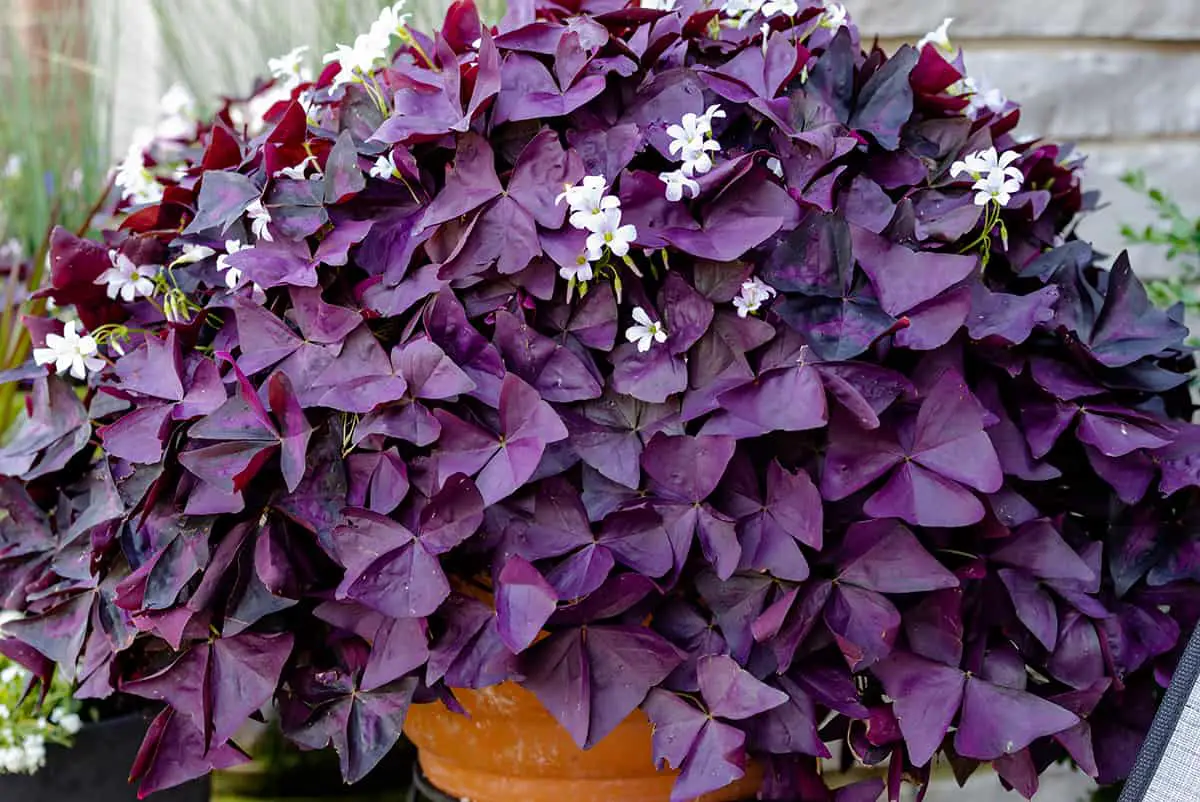
You may recognize the distinct purple leaves of Oxalis Triangularis. They fold at night and have a vivid color that can brighten any indoor space. This variety prefers well-drained soil and moderate light.
Oxalis ‘Iron Cross’
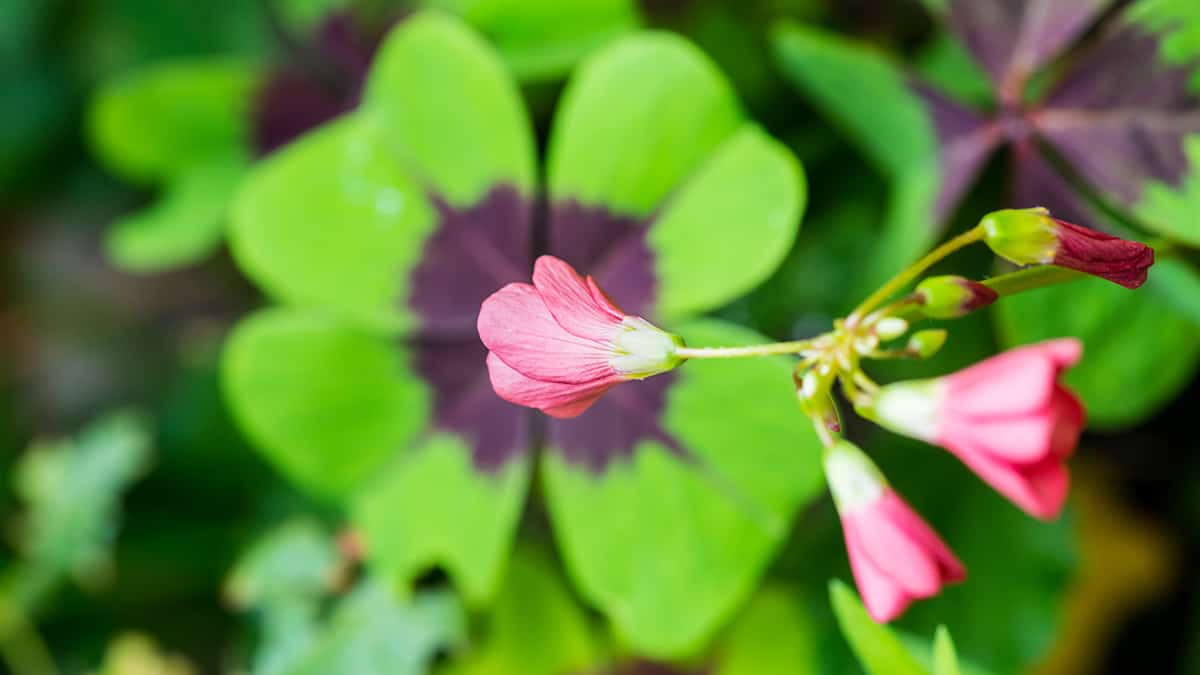
The Oxalis ‘Iron Cross’ stands out for its green leaves with a purple center that resembles an iron cross. It thrives in full sun or partial shade and blooms with pink flowers in the summer.
Oxalis Versicolor
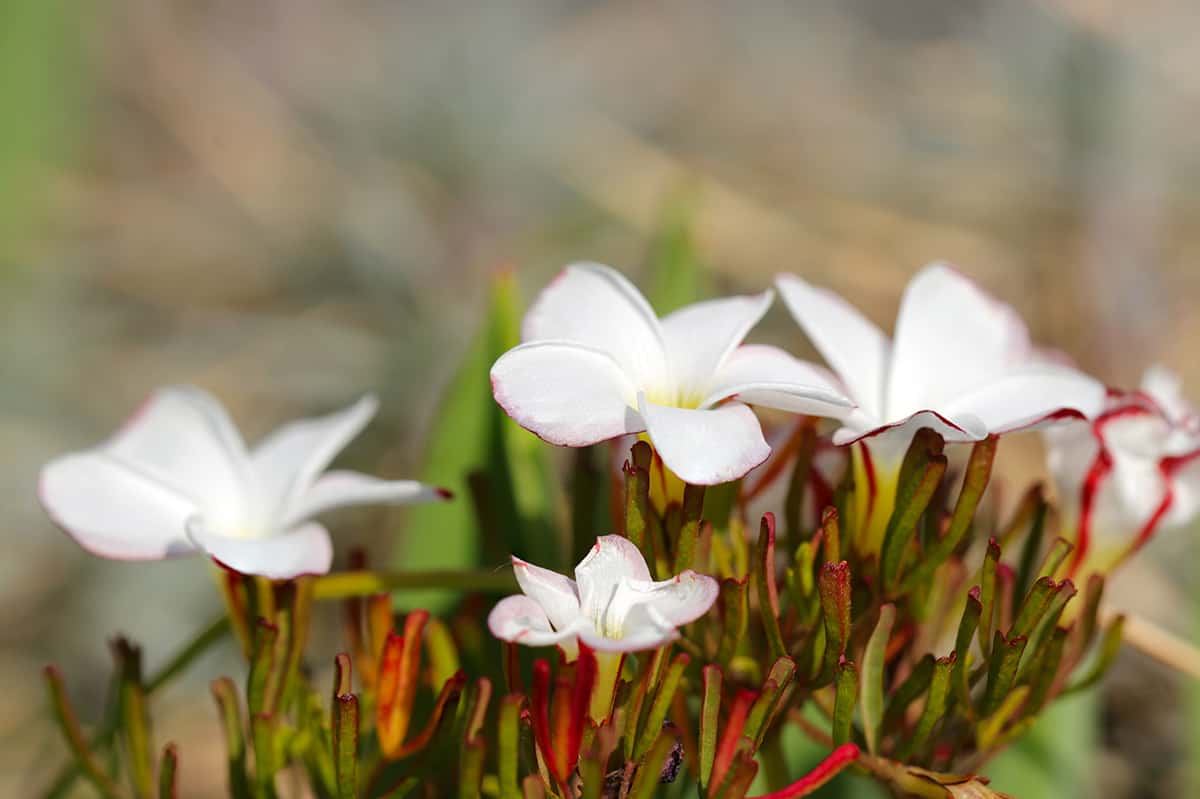
You’ll find Oxalis Versicolor captivating for its unique, candy-cane-striped flowers. They open white and reveal red stripes, creating a stunning display. Keep the soil moist for a healthy plant.
Oxalis Adenophylla

The Oxalis Adenophylla is known for its delicate appearance, with pink flowers and blue-green foliage. It’s a hardy alpine species that does well in rock gardens and prefers cooler temperatures.
Oxalis Articulata
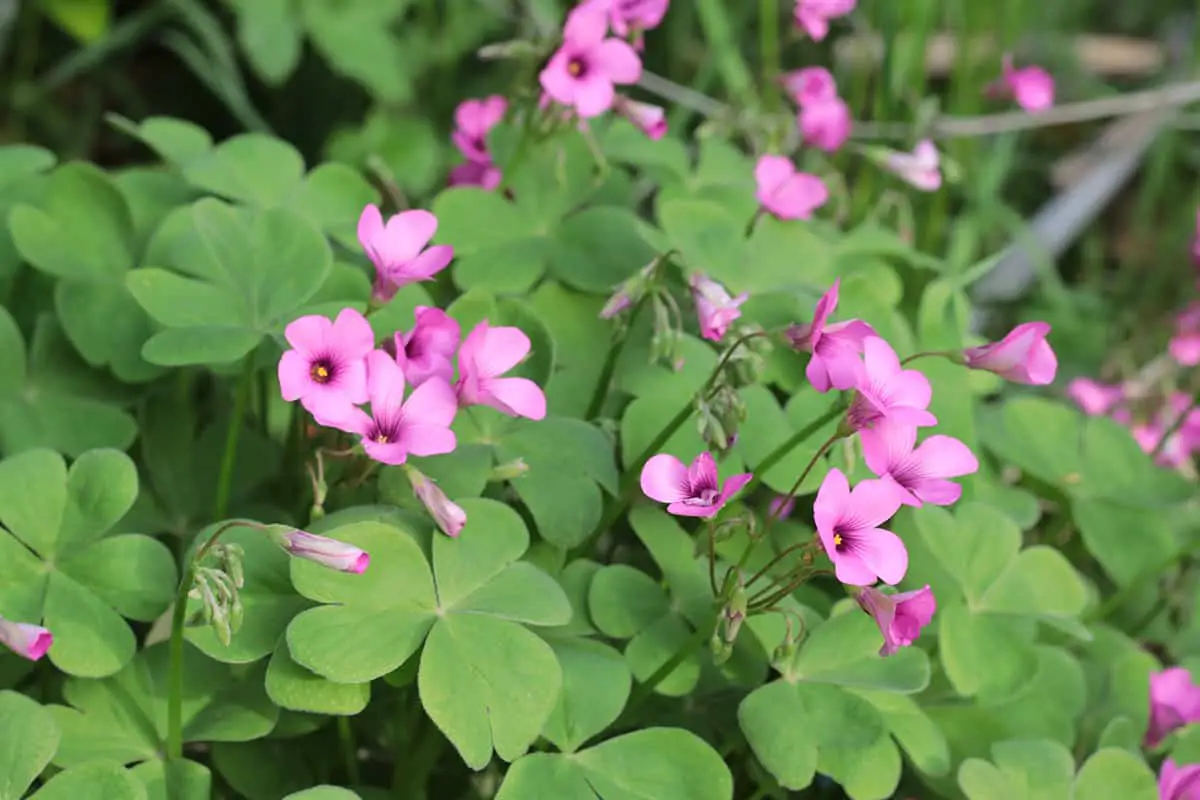
The soft pink blossoms of Oxalis Articulata, also known as Pink Oxalis, make it a charming addition. It forms dense clumps and is suitable for borders or as a potted plant.
Oxalis Deppei (Lucky Clover)
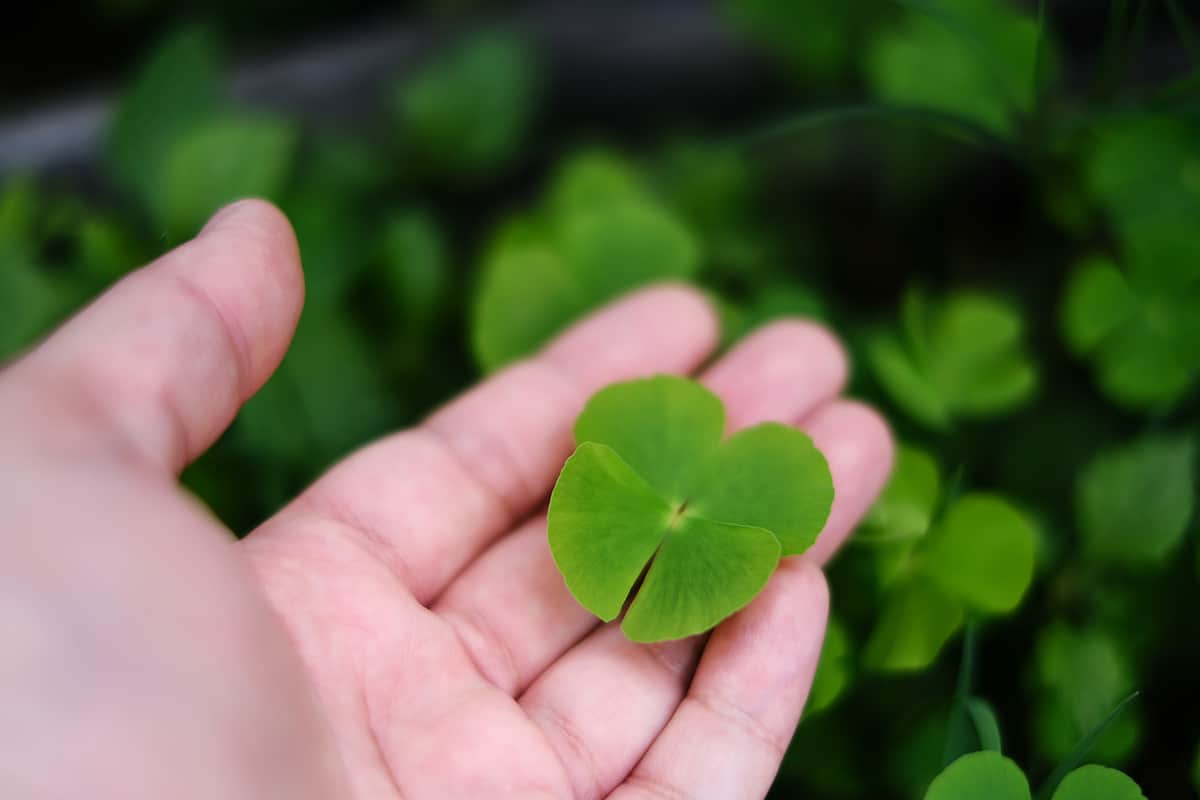
Oxalis Deppei, commonly named Lucky Clover, features four-leaf clover-shaped foliage. It has the classic look of a lucky charm and is often sought after for that quintessential clover look.
